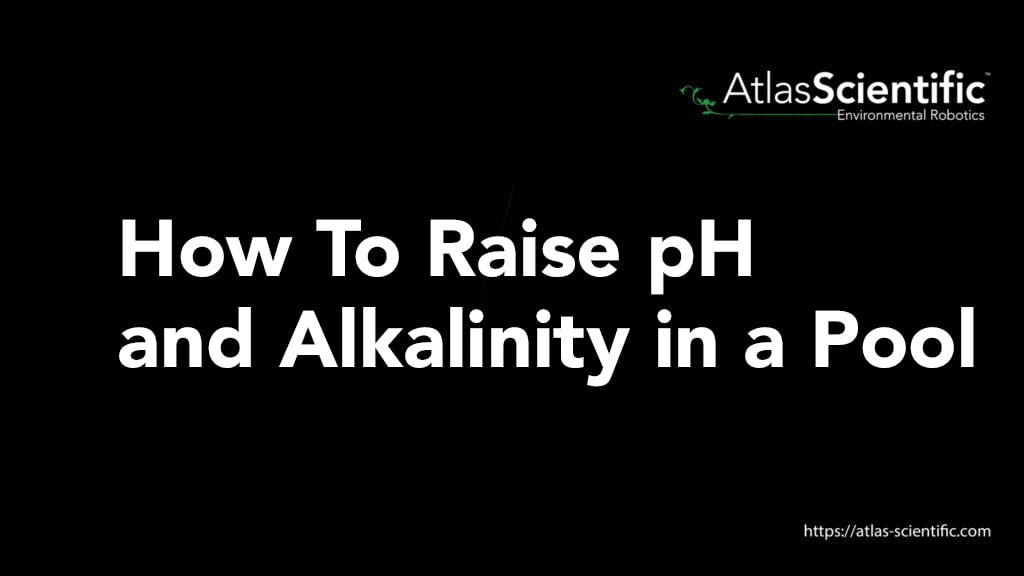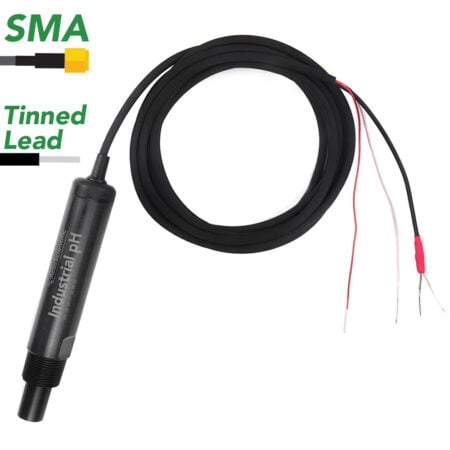Subtotal: $69.99

What Is pH Drift And How To Fix It? A Complete Troubleshooting Guide
pH drift is a common yet critical challenge in both industrial and laboratory environments, where the pH value moves away from the true, expected pH
Product Categories

If total alkalinity (TA) levels inside pool water are low, but pH levels are above 6.8, an alkalinity increaser (sodium bicarbonate: baking powder/soda) is added. When both the pH and TA need raising, a pH increaser (sodium carbonate: soda ash) is used. If the alkalinity swings too high during treatment, a pH reducer (sodium bisulfate) can be added.
Despite the benefits of owning a pool, they do come with a lot of responsibility. Pools need constant maintenance to keep the pool chemistry balanced. However, with the right test kits and pool maintenance knowledge, owning a pool becomes much easier.
One common issue is low pH and alkalinity levels. If your pool water starts appearing cloudy or your friends and family are complaining about burning eyes or itchy skin, likely, your pool’s chemistry levels are off.
But do not fear, as in this article we will tell you why the pH and alkalinity may have sunk, and what you can do to increase those levels inside your pool.
Before we dive into how you can raise the pH and alkalinity in your pool, it is important to understand the two key factors at hand. Alkalinity and pH are often confused as the same water parameter in the pool industry because they are closely related, but, it is essential to note that they are, in fact, not the same.

This is because pH measures the acidity or alkalinity of the water and alkaline measures ALL alkaline substances dissolved in water, measured in parts per million (PPM).
Inside a swimming pool, alkaline substances buffer pH fluctuations, and this, therefore, means that pH levels typically correlate with alkaline measurements. For example, if the pH of your swimming pool is low (acidic), then the alkalinity is most likely going to be low too. If the pH is too high (alkaline), then the alkalinity measurement will be high as well.
The pH scale measures how acidic the pool water is, ranging from 1-14; anything <7 is acidic, and anything >7 is alkaline. Swimming pools should have a maintained pH level between 7.4 and 7.8, and an alkalinity range between 80 and 120 PPM to ensure that it is suitable for human use.
One thing that they do have in common, is their importance in keeping your pool clean and more importantly, safe for human use.
Alkalinity and pH are two key factors that are not only important for keeping your pool clean for swimmers’ safety, but they are also important for preventing the following issues.
Low pH in pools leads to the metal liner or concrete wall becoming subject to acid erosion, which is dangerous for human safety. Acidic water also reduces the effectiveness of common disinfectants such as bromine or chlorine, which must be used to decontaminate the water after public use. Another issue is excessive algae growth, which not only harbors bacteria but is also a nuisance to remove.
Regularly testing the alkalinity and pH levels inside your swimming pool, will not only ensure it is a safe swimming environment, but maintaining pH and alkalinity ranges will also protect equipment such as the pool heater, pump, and other mechanical components from damage.
Generally, low alkalinity and pH labels are caused by natural factors such as evaporation, rain, or agitation of the pool’s water source.
These issues usually occur during the hot summer months, when swimming pools start degassing, releasing dissolved carbon dioxide (CO2). This directly impacts the alkalinity and pH levels of a pool, causing it to drop below 80 PPM if gone unnoticed.
We recommend testing and rebalancing the pH and alkalinity levels more often after heavy rain events and during the summer months.
Low pH can also happen after many people have used your in-home luxury. That’s right. If you have a large crowd utilizing your pool in a short time, the pH is likely to drop because of increased bodily fluids. As grotesque as this sounds, it is unfortunately true…
Other causes for low alkalinity & pH also include:
If your pH or alkalinity is too low in your swimming pool, the good news is you can easily resolve the issue. There are a couple of safe and effective products that can increase the pH and alkalinity in pools to return the water to safe swimming conditions.
Before you even consider which buffer solution to use, you need to measure the pH AND alkalinity level inside the pool. Apart from pH and alkalinity, we also recommend measuring calcium hardness, cyanuric acid, and chlorine levels.
Next, choose which product will be used to buffer the pool water. Adding a sodium carbonate such as soda ash is the most common compound used to raise alkalinity levels inside a pool.
While you can use regular baking soda, sodium carbonate and soda ash products come with thorough instructions and measurements for use.
Just like low pH and alkalinity levels, high alkalinity can also cause issues for your pool. You want to aim for alkalinity levels between 80 and 120 PPM, and a pH range between 7.4 and 7.8 to avoid creating further issues.
Depending on how low your pool levels are and the size of your pool, you may need to use more, or fewer products than listed in today’s article. So, first, you need to work out exactly how much water is inside the pool before calculating how much chemical buffer to add.
The general rule of thumb is to add 6 ounces of soda ash per 10,000-gallons of pool water to raise the pH level by 0.2 and the total alkalinity (TA) by 5 PPM.
The easiest way to calculate the dosage for soda ash is to work out how much you need to raise the pH and alkalinity within the recommended ranges (7.4-7.8; 80-120 PPM), and then measure the volume of the pool water.
For example, if you want to increase the pH from 7.0 to 7.4 in a 20,000-gallon swimming pool, you will need to add 24 ounces of soda ash, whereas if you only need to increase the pH from 7.2 to 7.4 in the same pool, you would only need 12-ounces of soda ash.
Now, here is the important part…
When adding soda ash to the pool, you should evenly sprinkle it and avoid dumping it in one area, so it dissolves more quickly. While it is fine to sprinkle the buffer near wave pumps, it’s not recommended to pour it directly in front of the pool skimmer as it will be sucked into the filtration system, having little to no effect on raising pH and alkalinity.
Another option is adding baking soda because of its ability to buffer solutions by reacting with acids to neutralize them.
Pool chemical measurements are based on 10,000 gallons of water per dosage. The general rule is to add 24 ounces of baking soda per 10,000 gallons of pool water to raise the alkalinity by around 10 PPM.
If the swimming pool’s pH is well below 7.2, we recommend adding 48 to 64 ounces of baking soda, remembering to test afterward to check that you do not swing past the ideal pH level of swimming pools. If you do go too far into the alkaline range, you will need to add an acid like muriatic acid or sodium bisulfate.
Allow the baking soda to fully dissolve for at least six hours before switching your pool’s circulation system back on. Repeat water chemistry tests over the next 6 to 24 hours, until the pH and alkalinity have successfully been raised.
If you are ever unsure how much buffer solution to add to your swimming pool, add small amounts every 6 hours and test the water before adding more.
Both are great choices to raise pH and alkalinity, however, if you are aiming to make large pH and alkalinity adjustments at the same time, then soda ash is better. But, if you want to raise the alkalinity level without overly affecting the pH level, we recommend using baking soda.
When raising pH and alkalinity in pool water, there are some safety tips that we advise you to follow.
Water testing is key in every aspect of water quality monitoring. Even when you think you are done, and you trust your judgment, ALWAYS retest the water chemistry inside your swimming pool.
Chemicals take time to disperse and dissolve, so we advise waiting around 6-8 hours after adding the buffer product to your pool before testing the water chemistry again. We also recommend testing after 24 hours, and then again after 48 hours to gauge if any small changes have occurred since adding the buffer product.
If the pool’s water chemistry falls within the ideal range of 80-120 PPM (alkalinity) and 7.4-7.8 (pH), then you are done!
If, after following the above steps, the pH and alkalinity are still too low inside your pool, go back and repeat the previous steps. We always say to start by adding small amounts of buffer solution to your pool. It is always better to have gradual increases than the level exceeding the guidelines.
Testing the pH and alkalinity inside a pool is very straightforward, but we often still get asked which pH testing kit is better. A pH meter or pH paper?

The simplest test is using a basic pH test kit. These are accurate enough to detect a sudden decrease in water chemistry, but they require the reader to match colors to a pH chart, which can sometimes result in misread results.
For high accuracy and repeatable measurements, we always recommend a pH meter. A digital pH meter is slightly more expensive, but it is totally worth the investment. A pH meter consists of a digital pH probe that is easily submersed into the pool water, providing you with instant and highly-accurate results of your pool’s pH levels.
If you already have a pH probe, that’s fantastic news! Just remember, to replace the pH probe every 12-18 months and calibrate it with a solution. If you are unsure how to calibrate a pH probe, read our pH calibration guide.
Pool water should have a pH between 7.4 and 7.8 to be considered safe for swimmers. If pH or alkalinity decreases and becomes acidic, do not worry, as raising pH and alkalinity in pools is an easy fix.
If total alkalinity levels inside pool water are low, but pH levels are above 6.8, baking powder/soda is added. When both pH and TA need to increase, soda ash is used. If the alkalinity swings too high during treatment, sodium bisulfate is added.
For any questions about pool water quality and pool maintenance, or what water testing kits we offer, do not hesitate to contact our world-class team at Atlas Scientific.







pH drift is a common yet critical challenge in both industrial and laboratory environments, where the pH value moves away from the true, expected pH

Hydrofluoric acid is an extremely versatile industrial chemical vital in semiconductors, manufacturing, fluorinated compounds, metal processing, glass etching, and petroleum refining. Although hydrofluoric acid is